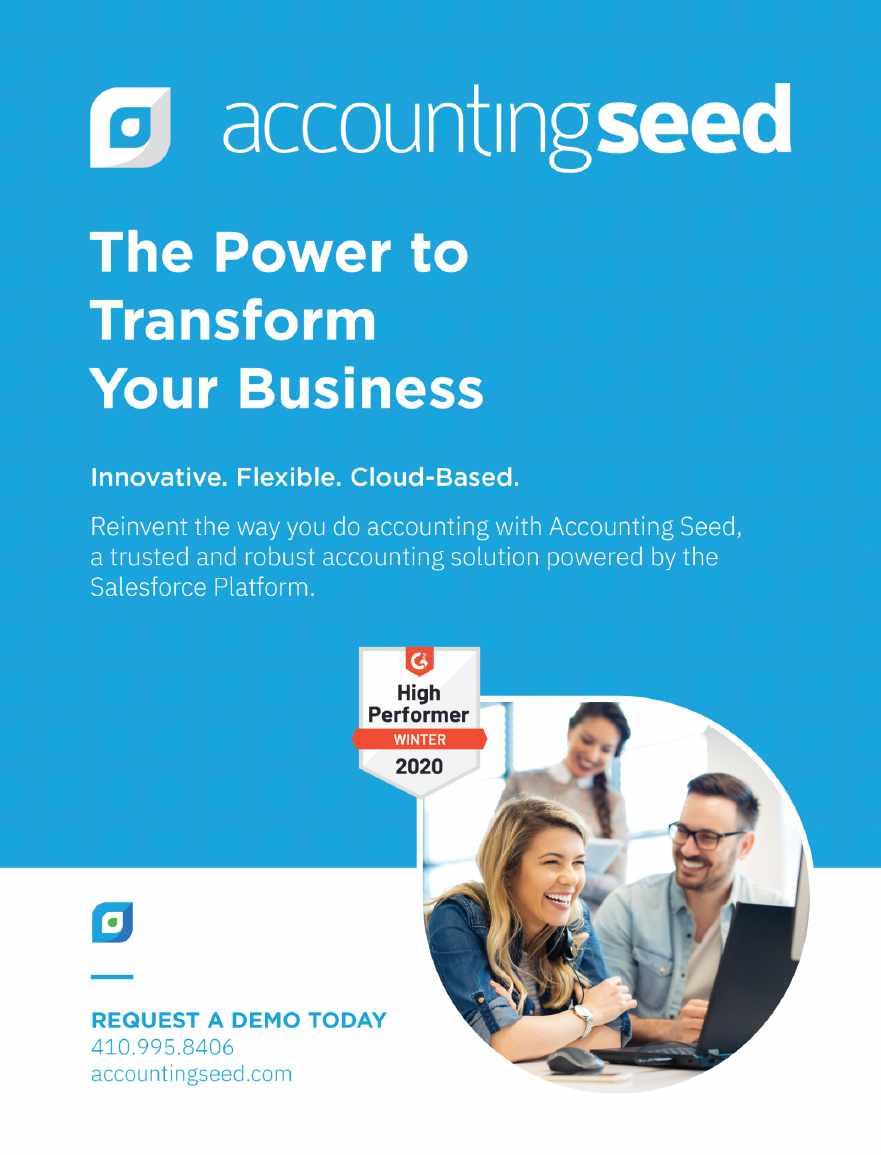
9 minute read
Unied Services
Eiji Uda , Chairman
Solving Social Issues with Cloud & IT
Advertisement
From startups and established players to investors and SMEs, everyone is embracing cleantech - technology for clean energy that is maturing and gaining momentum. The industry is evolving – clean energy providers and utility companies are transforming their business imperatives from centralized to a decentralized one. This evolution is customizing data to align the masses with energy usage alongside ensuring that the processes become seamless.
Established in 2004, Unified Service is one such organization that embraces Industrial Cloud and rolls out effective solutions across various Renewable Energy and Healthcare sectors. Living by excellence, the company intelligently targets the market thereby, integrating distributed data as unified.
Founder
Having more than four decades of experience across the IT industry, Eiji Uda is the Chairman of Unified Service. Over the years, his consistent endeavor has earned him longlasting relationships with Business Leaders, Government Officials, Members of the Diet, Venture Capitalists, Professors, Medias, etc. These relationships act as a catalyst for unlocking countless business opportunities for Unified Service.
Eiji leaves no stone unturned in helping the company to meet its goals and generate profitable outcomes. Speaking about himself, he says, “I know the big change in the past and mega trend in the near future”. Apart from all this, he has successfully stirred a multitude of distinguished profiles at Salesforce.com, SOFTBANK, IBM, etc.
The Story so Far
With the concept of the cloud becoming common in 2010, horizontal solutions started to take over. As such, the industrial cloud age was about to transfigure all the business applications in the cloud and Unified Service was not having big servers to captivate the same. Expanding horizons across a market full of scope was becoming a major challenge as the company was small and had no contacts in the Japanese IT world.
Sustaining in Japan, where the governance is strong and the market is flooded with competitors was not an easy task for the company. On the other hand, the Electric power business was monopolized by a large electric company divided by the area. However, the Government decided to deregulate this area for small solar power electric generation as a resource alongside keeping distributions open to any company.
Unified Service saw this market as a plate-full of opportunities to take on. It recognized that the electricity distribution was outlined by a regional company that already had a customer like ISP. Besides, most of them were not an enterprise company with enough investment money for a new area. These companies wanted to focus on their business, not internal system development.
Acknowledging this scenario, Unified Service came to the conclusion that embracing connectivity for other systems like ERP was the need of the hour. Slow and steadily, it decided to develop this Electric Power Customer Information System as a cloud and started focusing on the application development. SFDC.com was used as the application platform to efficaciously implement powerful security measures. Also. Force.com reputation, friendless of developer and market share was another key to select.
With each passing day, the company started receiving early adapter customers. This motivated Unified Service to expand its horizons and reach the epitome of success with its comprehensive business application progression.
Never Settle
The company has an array of Enterprise Portal solutions and CIS solutions (already in production). The enterprise portal solution helps to gather the distributed data and integrate the same to show the enduser while the CIS offers information on usage or electric power.
The company decided to enter the market to offer electricity with an advanced billing framework to its existing customer. This system can be started within three months after they sign an agreement and implement this business application requirement. The company is also well-equipped with a pool of professional consultants that help customers in understanding this business regulation.
Talking about the market capture team Unified service says, “We gain the market share that also
contributes the speed up the specification enhancement. In the end, large capital increase (5 times more) from new investors in 2018 for our further growth”.
Ready for Future
Welcoming visitors to Japan is one of the largest initiatives undertaken by the government. Recognizing this, Unified Services is now focusing on the application for visitors in Japan. The company is consistently striving to develop systems that offer appropriate information to the visitors thereby, giving them an unmatched travel experience.
The company is all set to help the visitors in accessing more places during their span in Japan. Seeing the future as a host of new avenues

Michitoshi Hirono , President

team Unified Service says, “We started a specific area in Japan and beta testing is almost all done. We expect to expand the area to welcome the visitors of the upcoming Olympics and that leads our continuous success to incorporate their review and opinion in the site”.
INNOVATION, BEYOND IMAGINATION

We focus to provide solutions that offer a unique user experience and a unique way of using the different videoconferencing and meeting applications while maximizing interaction and collaboration.
For a manager, strategic planning plays an important role. With strategic planning, one can easily accomplish the important goals set ahead, and can also allow the business to run with much more efficiency. Let us understand the steps in strategic planning that will yield you with better results.
But before that, let’s first find out, what is strategic planning? Organizations emphasize on strategic planning because it helps them to set goals and have an actionable plan to achieve those in a specific time span. There may be a different plan for the organization, and with that, there are several different strategies managers implement with their teams.
Everyone employs different methods that suit them. So why do we need to understand the strategic planning process? It is because, if you use the right methods, you will be able to get better results and higher productivity, which is integral to the company’s long-term success.
Here are the 7 steps of a strategic planning process.
1. Understand the need for a strategic plan
This is the most important step in the entre process. Before you plan out anything, you need to understand why it has to be planned, and then you can move on to other questions like how to plan and execute.
In the terms of management it means that you have a close watch at the industry environment, how

STEPS FOR S
TEPS FOR STRATEGIC PLANNING

the businesses operate and then carefully identify the opportunity for development. And after you have identified the opportunities, you can then begin to plan out the actions that would help you take advantage of those opportunities.
2. Set Goals
The second step in the strategic planning process is setting goals. One can set goals for both, the individual departments and also the organization as a whole. For example, the goal for the entire organization would be to secure the bid, whereas for individual departments it would be specific performance metrics.
One thing you need to keep in mind is that, when you set goals for the organization, it can be general. But when you set goals for individual teams, they need to be specific.
3. Develop assumptions or premises
When you are setting goals for the organization or even the team, it has to be done with the future in mind. Of course, you cannot predict what will happen in the future, which is why you need to make plans by assuming certain things. If your team’s goal is to increase the profits, you have to set it with a few assumptions. Because the management team cannot forecast the change in the industry scenario, and whether or not the industry will support the increase in profits. During this process, you will have to look into both, internal and external premise.
Some of the internal premises include• The expected availability of the resources. • The changed company policies that you will have to implement. • And the interaction of the levels of management with the plan. The external premises that might affect include- • The social and the political environment. • Technological advancements. • The competitive environment.
4. Work on different ways to achieve the goals
A goal can be achieved in many different ways. But you have to still research the different ways to get there. This is because we all know, one size does not fit all. You need to find the way to which your team responds the best.
Now why is this important you might wonder? It is so that it gives the managers some flexibility to direct their team. If one strategy does not work, it shouldn't end there. The managers should constantly experiment with what works and what does not.
5. Choose your plan of action
Now once you have completed everything, that is set the goals, researched and evaluated different and the best solutions to work towards it the next step is to decide the plan of action. An ideal plan of action would be the one that is most profitable.
One thing you need to keep in mind is that when you decide the pan of action, you have to base it on concrete evidence, like a mathematical analysis. While doing this, you can also take the elements from other plans into considerations and fit it accordingly.
6. Develop a supporting plan
When you make a solid plan with all the research that is going to help you increase the profit margins, you also need to develop a secondary plan, as a support plan.
For example, if your objective is to launch a new product, the main plan may include the necessary steps like market research, product research, developing a promising marketing plan, manufacturing etc. The secondary plan n this case would include all the necessary steps that will support the implementation of this plan.
7. Implementing the strategic plan.
The final step of the strategic planning is implementing the plan that you have made. So when you are implementing the plan, you have to draw out your skills and make sure the made plan runs smoothly.
If the goals you have set are difficult, making the plan a little more complex, the managers must take their time to make sure that the team members have a better understanding of their responsibilities and align with the larger goal.
Thus strategic planning can help the managers take out the best in their employees and team members, by promising increased productivity and efficiency.
HALOCORE

PROTECT SENSITIVE & CONFIDENTIAL DATATHAT IS NEEDED OUTSIDE OF SAP.
SWITZERLAND INDIA USA








